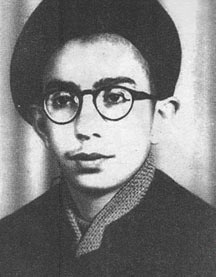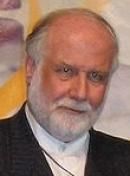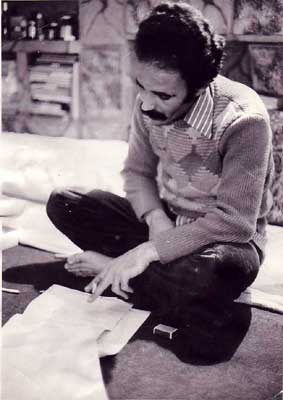|
2000 In Iran
The following lists events that happened during 2000 in Iran. Incumbents * Supreme Leader: Ali Khamenei * President: Mohammad Khatami * Vice President: Hassan Habibi * Chief Justice: Mahmoud Hashemi Shahroudi Events * Iranian legislative election, 2000. Deaths * June 6 – Houshang Golshiri, 62, Iranian fiction writer. * October 24 – Fereydoon Moshiri, 73, Iranian poet. Notable births See also * Years in Iran References Iran Years of the 20th century in Iran Iran Iran, officially the Islamic Republic of Iran, and also called Persia, is a country located in Western Asia. It is bordered by Iraq and Turkey to the west, by Azerbaijan and Armenia to the northwest, by the Caspian Sea and Turkmeni ... 2000s in Iran {{Iran-year-stub ... [...More Info...] [...Related Items...] OR: [Wikipedia] [Google] [Baidu] |
Supreme Leader Of Iran
The Supreme Leader of Iran ( fa, رهبر ایران, rahbar-e irān) is the List of heads of state of Iran, head of state of the Iran, Islamic Republic of Iran. The Supreme Leader directs the Government of the Islamic Republic of Iran, executive system and History of the judicial system of Iran, judicial system of the Government of the Islamic Republic of Iran, Islamic theocratic government and is the Commander-in-Chief of the Iranian Armed Forces, commander-in-chief of the Iranian Armed Forces. The Supreme Leader is the highest-ranking political and religious authority of Iran. The Armed Forces of the Islamic Republic of Iran, armed forces, Judicial system of Iran, judiciary, Islamic Republic of Iran Broadcasting, state television, and other key government organisations such as Guardian Council and Expediency Discernment Council are subject to the Supreme Leader."Who's in Charge?" by Ervand Abrahamian ''London Review of Books'', 6 November 2008 According to the constitution, t ... [...More Info...] [...Related Items...] OR: [Wikipedia] [Google] [Baidu] |
Ali Khamenei
Sayyid Ali Hosseini Khamenei ( fa, سید علی حسینی خامنهای, ; born 19 April 1939) is a Twelver Shia ''marja''' and the second and current Supreme Leader of Iran, in office since 1989. He was previously the third president of Iran from 1981 to 1989. Khamenei is the longest serving head of state in the Middle East, as well as the second-longest serving Iranian leader of the last century, after Shah Mohammad Reza Pahlavi. According to his official website, Khamenei was arrested six times before being sent into exile for three years during Mohammad Reza Pahlavi's reign. After the Iranian revolution overthrowing the shah, he was the target of an attempted assassination in June 1981 that paralysed his right arm. Khamenei was one of Iran's leaders during the Iran–Iraq War in the 1980s, and developed close ties with the now powerful Revolutionary Guards which he controls, and whose commanders are elected and dismissed by him. The Revolutionary Guards have been ... [...More Info...] [...Related Items...] OR: [Wikipedia] [Google] [Baidu] |
President Of Iran
The president of Iran ( fa, رئیسجمهور ایران, Rayis Jomhur-e Irān) is the head of government of the Islamic Republic of Iran. The president is the second highest-ranking official of Iran after the Supreme Leader. The president is required to gain the Supreme Leader's official approval before being sworn in by the Parliament and the Supreme Leader has the power to dismiss the elected president if he has either been impeached by Parliament or found guilty of a constitutional violation by the Supreme Court. The president carries out the decrees, and answers to the Supreme Leader, who functions as the country's head of state.(see Article 110 of the constitution) Unlike the executive in other countries, the president of Iran does not have full control over the government, which is ultimately under the direct control of the Supreme Leader. Before elections, the nominees must be approved by the guardian council to become a president candidate. Members of the guardian c ... [...More Info...] [...Related Items...] OR: [Wikipedia] [Google] [Baidu] |
Mohammad Khatami
Sayyid Mohammad Khatami ( fa, سید محمد خاتمی, ; born 14 October 1943) is an Iranian politician who served as the fifth president of Iran from 3 August 1997 to 3 August 2005. He also served as Iran's Minister of Culture from 1982 to 1992. Later, he was critical of the government of subsequent President Mahmoud Ahmadinejad. Little known internationally before becoming president, Khatami attracted attention during 1997 Iranian presidential election, his first election to the presidency when he received almost 70% of the vote. Khatami had run on a platform of liberalization and reform. During his election campaign, Khatami proposed the idea of Dialogue Among Civilizations as a response to Samuel P. Huntington, Samuel P. Huntington's 1992 theory of a Clash of Civilizations. The United Nations later proclaimed the year 2001 as the United Nations' ''Year of Dialogue Among Civilizations'', on Khatami's suggestion. During his two terms as president, Khatami advocated freedom ... [...More Info...] [...Related Items...] OR: [Wikipedia] [Google] [Baidu] |
Vice President Of Iran
The vice president of Iran ( fa, معاون رئیسجمهور ایران) is defined by article 124 of the Constitution of the Islamic Republic of Iran, Constitution of Iran, as anyone appointed by the president of Iran to lead an organization related to presidential affairs. , there are 12 vice presidents in Iran. The first vice president ( fa, معاوناول) leads cabinet meetings in the absence of the president. Vice presidents First vice president The role of the first vice president was created in the revision of the Constitution of the Islamic Republic of Iran, Constitution in 1989. It took over some of the responsibilities of the Prime Minister of Iran, prime minister. According to Article 124, the first vice president chairs the board of ministers and coordinates the other vice presidencies, if let by the president. According to Article 131, the first vice president takes over as acting president in cases where the President in incapacitated, but only if permitte ... [...More Info...] [...Related Items...] OR: [Wikipedia] [Google] [Baidu] |
Hassan Habibi
Hassan Ebrahim Habibi ( fa, حسن حبیبی; 29 January 1937 – 31 January 2013) was an Iranian politician, lawyer, scholar and the first first vice president from 1989 until 2001 under Presidents Akbar Hashemi Rafsanjani and Mohammad Khatami. He was also a member of the High Council of Cultural Revolution and head of Academy of Persian Language and Literature from 2004 until his death in 2013. Early life and education Habibi was born on 29 January 1937. He studied sociology in France. He held a PhD in law and sociology. When he was a university student he visited Khomeini while the latter was in exile. Career Habibi was tasked by Ayatollah Khomenei to draft the prospective constitution of Iran when the latter was in exile in Paris. His version was heavily modified due to criticisms and the final text was approved by the election in November 1979. Following the Iranian revolution, Habibi was named public spokesman for the revolutionary council. He was among the main archi ... [...More Info...] [...Related Items...] OR: [Wikipedia] [Google] [Baidu] |
Chief Justice Of Iran
The Chief Justice of Iran is the head of the Judicial system of the Islamic Republic of Iran (Head of Judiciary) and is responsible for its administration and supervision. The head of the judiciary of Iran is required to be an "honorable man" according to Article 157 ead of Judiciaryof the Constitution of the Islamic Republic of Iran. The Supreme Leader (Ali Khamenei) appoints and can dismiss Chief Justice. The Chief Justice is also the highest judge of the Supreme Court of Iran. The Chief Justice nominates some candidates for serving as minister of justice and then the President select one of them. The Chief Justice can serve for two five-year terms. List of Chief Justices of Iran * Emadoddin Mirmotahhari to 1975 * Nasser Yeganeh 1975–1979, appointed by Amir-Abbas Hoveyda Amir-Abbas Hoveyda ( fa, امیرعباس هویدا, Amīr 'Abbās Hoveyda; 18 February 1919 – 7 April 1979) was an Iranian economist and politician who served as Prime Minister of Iran from ... [...More Info...] [...Related Items...] OR: [Wikipedia] [Google] [Baidu] |
Mahmoud Hashemi Shahroudi
Sayyid Mahmoud Hashemi Shahroudi ( fa, سید محمود هاشمی شاهرودی, 15 August 1948 – 24 December 2018) was an Iranian Twelver Shia cleric and conservative politician who was the Chairman of the Expediency Discernment Council from 14 August 2017 until his death on 24 December 2018. He was previously the Chief Justice of Iran from 1999 to 2009. He was also an Iraqi citizen and a former member of the Islamic Dawa Party. Shahroudi's official English-language biographical information from the Iranian Assembly of Experts' website opens with his education received in Najaf, Iraq from Muhammad Baqir al-Sadr, the Islamic Dawa Party Founder, and takes the view that al-Sadr was killed; al-Sadr was executed without trial by Saddam Hussein's regime in April 1980. Hashemi Shahroudi became the leader of the Supreme Council for the Islamic Revolution in Iraq, which caused objections to his serving as the Head of Iran's Judiciary. He was a member of Iran's Guardian Council. U ... [...More Info...] [...Related Items...] OR: [Wikipedia] [Google] [Baidu] |
Iranian Legislative Election, 2000
Parliamentary elections were held in Iran on 18 February 2000, with a second round on 5 May. The result was a solid victory for 2nd of Khordad Front and its allies, the reformist supporters of President Mohammad Khatami. Campaign A total of 6,083 candidates contested the elections. 225 of the 290 seats were won in the first round of voting. Registration process took place between 11 and 16 December 1999. Main reformist coalition lists were "2nd of Khordad Press" and "Coalition of 15 Groups Supporting 2nd of Khordad" (including 11 out of 18 members in the 2nd of Khordad Front) and main principlist coalition was Coalition of Followers of the Line of Imam and Leader. Rest of lists were issued by solitary parties. For the first time Council of Nationalist-Religious Activists of Iran issued an electoral list and was able to win two exclusive seats ( Alireza Rajaei in Tehran, Rey, Shemiranat and Eslamshahr and Rahman Kargosha in Arak, Komijan and Khondab) but the Guardian Council ... [...More Info...] [...Related Items...] OR: [Wikipedia] [Google] [Baidu] |
Houshang Golshiri
Houshang Golshiri ( fa, هوشنگ گلشیری; March 16, 1938''A Hundred Years of Storytelling in Iran'', Amir Abedini, p. 274. – June 5, 2000) was an Iranian fiction writer, critic and editor. He was one of the first Iranian writers to use modern literary techniques, and is recognized as one of the most influential writers of Persian prose of the 20th century. Biography Early life Golshiri was born in Isfahan in 1938 and raised in Abadan. He came from a large family of modest circumstances. From 1955 to 1974, Golshiri lived in Isfahan, where he completed a bachelor's degree in Persian at the University of Isfahan and taught elementary and high school there and in surrounding towns. Writing career Golshiri began writing fiction in the late 1950s. His publication of short stories in ''Payam-e Novin'' and elsewhere in the early 1960s, his establishment of ''Jong-e Isfahan'' (1965/73), the chief literary journal of the day published outside of Tehran, and his partici ... [...More Info...] [...Related Items...] OR: [Wikipedia] [Google] [Baidu] |
Fereydoon Moshiri
Fereydoon Moshiri ( fa, فریدون مشیری; September 21, 1926 – October 24, 2000) was one of the prominent contemporary Persian poets who wrote poems in both modern and classic styles of the Persian poem. A selection of his poems has been translated into English entitled ''With All my Tears'' by Ali Salami. Some of his other published works are as follows: * 1957, ''Gonah-e Darya'' (''The Sin of the Sea'') * 1958, ''Nayafteh'' (''Undiscovered'') * 1960, ''Abr'' (''The Cloud'') * 1970, ''Parvaz Ba Khorshid'' (''Flying With the Sun'') * 1978, ''Bahar ra Bavar Kon'' (''Believe the Spring'') * 1988, ''Ah Baran'' (''Oh, the Rain'') * 2001, ''Ta Sobh-e Tabnak-e Ahura'ii'' (''Until the Bright of Ahuric Dawn'') Last years Fereydoon Moshiri had been suffering from leukaemia and kidney failure Kidney failure, also known as end-stage kidney disease, is a medical condition in which the kidneys can no longer adequately filter waste products from the blood, functioning at less than ... [...More Info...] [...Related Items...] OR: [Wikipedia] [Google] [Baidu] |
Years In Iran
This is a list of years in Iran. __NOTOC__ The Islamic Republic of Iran (1979–present) This is a list of years in Iran during the Islamic Republic of Iran. The Imperial State of Iran (1935–1979) This is a list of years in Iran during the Imperial State of Iran. The Imperial State of Persia (1925–1935) This is a list of years in Persia during the Imperial State of Persia. Persia during the Qajar dynasty (1796–1925) This is a list of years in Persia during the Qajar dynasty. See also * Timeline of Iranian history * List of Islamic years * History of Iran Cities in Iran: * Timeline of Shiraz * Timeline of Tehran * Timeline of Tabriz {{DEFAULTSORT:Years in Iran, List of Iran history-related lists Iran Iran, officially the Islamic Republic of Iran, and also called Persia, is a country located in Western Asia. It is bordered by Iraq and Turkey to the west, by Azerbaijan and Armenia to the northwest, by the C ... [...More Info...] [...Related Items...] OR: [Wikipedia] [Google] [Baidu] |






.jpg)
